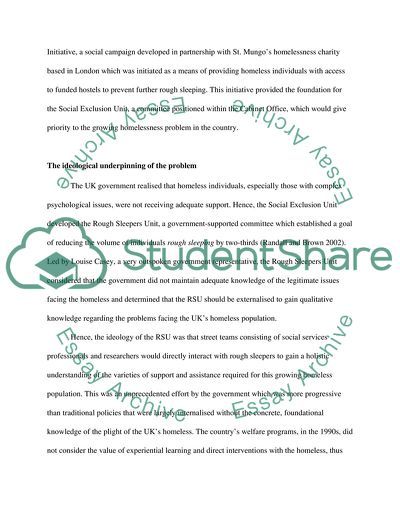Cite this document
(The Rough Sleepers Initiative Case Study Example | Topics and Well Written Essays - 2264 words, n.d.)
The Rough Sleepers Initiative Case Study Example | Topics and Well Written Essays - 2264 words. Retrieved from https://studentshare.org/sociology/1818527-social-policy-select-a-specific-social-policy-in-uk
The Rough Sleepers Initiative Case Study Example | Topics and Well Written Essays - 2264 words. Retrieved from https://studentshare.org/sociology/1818527-social-policy-select-a-specific-social-policy-in-uk
(The Rough Sleepers Initiative Case Study Example | Topics and Well Written Essays - 2264 Words)
The Rough Sleepers Initiative Case Study Example | Topics and Well Written Essays - 2264 Words. https://studentshare.org/sociology/1818527-social-policy-select-a-specific-social-policy-in-uk.
The Rough Sleepers Initiative Case Study Example | Topics and Well Written Essays - 2264 Words. https://studentshare.org/sociology/1818527-social-policy-select-a-specific-social-policy-in-uk.
“The Rough Sleepers Initiative Case Study Example | Topics and Well Written Essays - 2264 Words”. https://studentshare.org/sociology/1818527-social-policy-select-a-specific-social-policy-in-uk.


